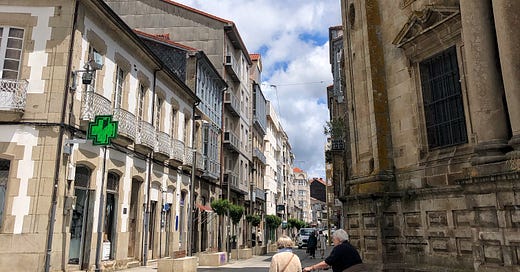Inside Spain's first Blue Zone (Netflix take note)
12% of Spain’s centenarians live in Galicia. I visited Celanova, the “Galician Okinawa” to find out why this area of extreme longevity is set to become Spain’s first Blue Zone.
In Celanova, locals don’t act their age.
Two hours of solid midweek mid-summer rain could have postponed play, but in Bar Nova America at half past seven - Spain’s no-man’s-land window between the merienda and cena - I sat adjacent to the action. With a snooker table-style green cloth for a playing surface and a notepad to keep score, the five women only loosened their poker faces after each round of cards to swap gossip and share news about grandchildren.
After an hour of people watching and eavesdropping, I followed a loud group, with that unmistakable Galician lilt, into Tapería Esmorga. With a glass of local Mencia wine, squid ink croquetas, and a dish of fresh prawns sizzling violently in a broth of olive oil and chopped garlic for company, I watched three middle-aged men with flushed faces and bulging beer bellies at the bar watching football. It was highly unlikely, I thought, that any of them would be following in the extrem…
Keep reading with a 7-day free trial
Subscribe to La Comunidad to keep reading this post and get 7 days of free access to the full post archives.




